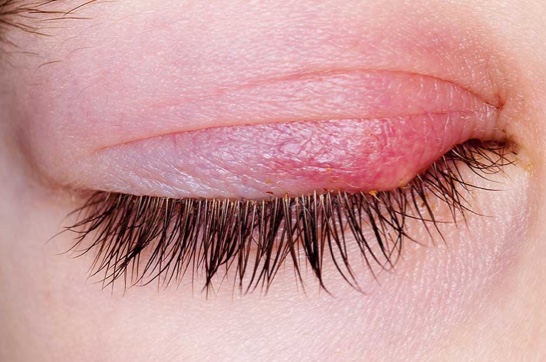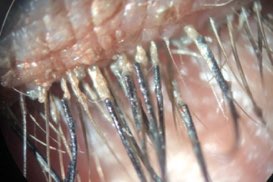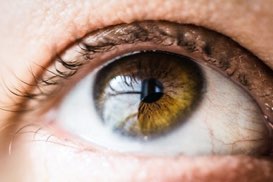If your eyes are bothering you, it is very important to have a thorough eye examination to properly diagnose the cause(s). If you have more than one condition (e.g. dry eye, allergies, blepharitis, ocular rosacea, meibomian gland dysfunction (MGD), contact lens related issues, conjunctivochalasis, demodex, other) it is imperative that each is identified. This is because treating only one condition will be met with limited success. Your eyes and eyelids will be their healthiest when all conditions causing irritation and inflammation are properly identified and treated.
Meibomian Gland Dysfunction (MGD) is a chronic, diffuse abnormality of the glands in your eyelids known as meibomian glands. Meibomian gland dysfunction is often associated with blepharitis*, ocular rosacea**, and/or demodex*** (see definitions below).

The meibomian glands are oil producing glands in both your upper and lower eyelids. The oil produced by these glands forms the outermost layer of your tear film. This oil layer protects your tears from rapidly evaporating. When these oils are reduced or eliminated, your tears evaporate from the surface of your eyes quickly and your eyes become much drier. This is especially true when you are engaged in visually intense tasks such as reading (books, magazines, newspapers), staring at a computer, cell phone, or tablet screen, watching television, driving, etc.
When the meibomian glands are healthy, the oil they produce has the consistency of olive oil. When the glands are inflamed, the oils they produce become thickened, having a consistency more like that of toothpaste, leading to clogging of your meibomian glands. When your meibomian glands become clogged, the oil layer is not contributed to your tear film; your eyes become drier, and more irritated and inflamed. This inflammation causes damage to the surface of your eyes and your tear producing glands. Additionally, the back pressure caused by the clogging of your meibomian glands results in damage to the glands, with gland shortening, atrophy and death.
Untreated, meibomian gland dysfunction is chronic and progressive. Allowed to progress, the damage to meibomian glands is irreparable and can lead to significant discomfort with dry, red, irritated and inflamed eyes, recurrent infections, scarring of the surface of your eyes, and decreased vision.
Unfortunately, lost meibomian glands do not have the ability to spontaneously regenerate.
Blepharitis, ocular rosacea and meibomian gland dysfunction are very closely related. They all cause damage to your meibomian glands secondary to inflammation, thickening of the meibomian glands' contents, clogging of the glands, decreased oil production, and the accumulation of a biofilm****on your eyelids.
ROUTINE SCREENING AND EVALUATION ARE ESSENTIAL FOR EARLY DETECTION AND INTERVENTION TO PREVENT PERMANENT MEIBOMIAN GLAND LOSS
Terms Defined
*Blepharitis:
Blepharitis is a condition where there is inflammation of the eyelids around the area of the eyelashes and the meibomian glands. You can have a seborrheic component (often with "dandruff" in your eyelashes) and/or a bacterial (staphylococcal) component sometimes causing styes or chalazia.
**Ocular Rosacea:
Ocular rosacea is characterized by inflammation of the eyelids. It is often the first sign of rosacea of the face (which can involve the nose, cheeks, forehead and chin). People with rosacea tend to blush or flush easily. People with rosacea also have a much higher incidence of Demodex infestations.
***Demodex:
Demodex mites are little bugs that can infest your eyelashes, eyelash follicles and eyebrows. These mites are nocturnal, coming out of your eyelash follicles at night to eat, mate and lay their eggs. Their life cycle is typically 2 to 3 weeks. If your eyelashes are infested with Demodex you may experience redness, itching or irritation of your eyelids, "dandruff" in your eyelashes; while some people with demodex are unaware of any symptoms at all. Demodex infestations cause damage to your eyelash follicles and your meibomian glands, making it important to quickly diagnose and treat an infestation.
****A biofilm is a slimy, sticky film of bacteria that coats the surface of the eyelids. A biofilm is composed of a well-hydrated matrix of bacteria and their glycocalyx, a sugary coating that allows cells to adhere to and communicate with each other. The eyelid margin with its moisture, nutrients and warmth, is the perfect environment to cultivate a thriving bacterial biofilm. Some people experience an increased frequency of accumulation of a tenacious biofilm along their eyelid margins. These individuals benefit from periodic exfoliation of their eyelids to keep their meibomian gland orifices (openings) uncapped of unclogged. This helps to ensure the health of the meibomian glands, and decrease irritation and inflammation, thus keeping the eyes and eyelids healthier and more comfortable.








